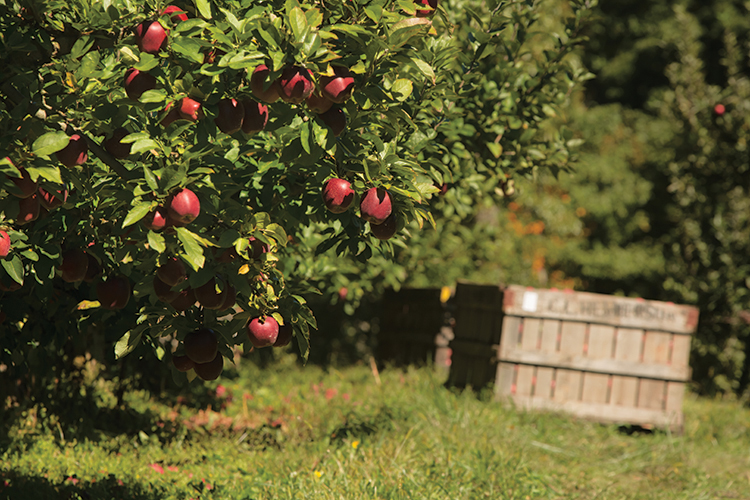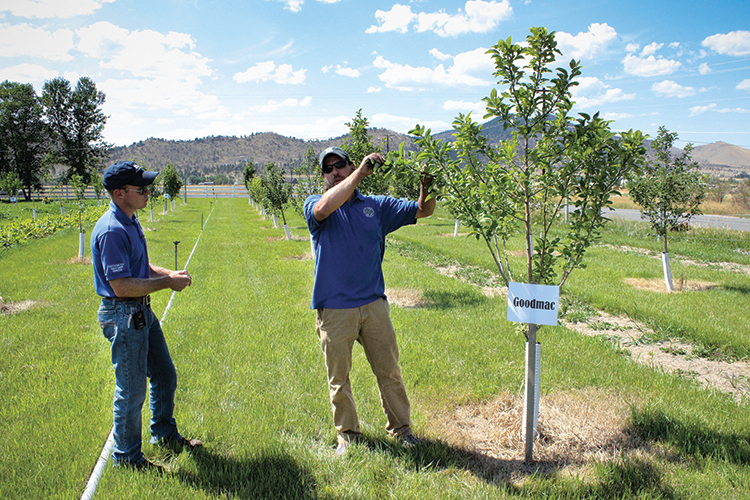Home > Montana > Montana Crops & Livestock > Fruitful Opportunities Abound in Montana
Fruitful Opportunities Abound in Montana

To get a better grip on the future of growing fruit in Montana, researchers are looking into the past.
New research into the Montana fruit industry is shedding positive light on opportunities for future production, and part of that research in recent years has taken place at Montana State University (MSU) through an initiative called the Montana Heritage Orchard Program.
Guided by Agricultural Extension Agent Brent Sarchet with MSU Lewis & Clark County and Horticulture Extension Specialist Toby Day with MSU, the program focuses on fruit orchards planted in Montana at least 100 years ago. The orchards may hold clues about what could bring success to today’s fruit growers, Sarchet says.
“We know we have the 100-year-old- plus orchards located throughout the state,” he says. “The question is, how can we identify these, try to preserve them and learn as much as we can to help us in planting future orchards?”
Researchers are using a lab on the Bozeman campus to test tree DNA. Through testing, they can figure out what varieties have had success.
“That’s a good indication that if someone wants to plant future orchards, they should probably consider those varieties that have been successful this long,” Sarchet says.
A Way to Diversify
Though Montana’s fruit sector isn’t significant to the state’s agricultural economy, there is room to grow. Fruit is largely absent from Montana’s local food system, Sarchet says, and the majority of counties have areas that are designated as food deserts.
“When Extension started looking at scenarios and how we can encourage people to plant more fruit, we realized that MSU Extension hasn’t really performed any fruit-related research since the late 1970s. And even then, it was pretty limited and very specific to the western side of the state,” Sarchet says. “I think this research will be extremely helpful for people planting new orchards, which are really important to address this lack of fruit and to help address the large food deserts that we have across the state.”
Sarchet says the hope is that farmers and ranchers will look at fruit production as a way of diversifying their operations, especially small-acreage operations.
“This is a feasible option if they want to make the investment and be committed to it,” he says.
In addition to the Heritage Orchard Program, MSU launched a fruit tree cultivar research project in 2013 to test varieties of apples, plums and pears that were planted at 10 sites across the state. The findings from this project hold promise, Sarchet says.
“As we continue collecting data on their performance, I think we’re going to come up with some great resources for people who want to plant orchards,” he says.
Bitterroot Valley A Haven
Extensive research is also taking place at the Western Agricultural Research Center (WARC) in Corvallis, where apple orchards have traditionally flourished in the Bitterroot Valley. They’re making a resurgence among small-acreage farmers.
“What has changed is the market opportunity,” says Zach Miller, Superintendent of the WARC. “Young farmers are coming back and really want to tap into the local food movement. Many have started with a farmers market stand and growing vegetables, but there is still untapped potential for supplying local fruits in addition to vegetables.”
A niche market that has taken hold is cider production.
“Cideries have great potential because they fit a small-scale operation,” Miller says. “You’ve got that value-added factor, and you’re also solving a lot of the labor constraints that you run into if you’re trying to grow a pretty table apple.”
Like Sarchet, Miller also says adding fruit production lets farmers diversify their operations.
“And a lot of those fruits are really profitable once they get into production.”





Linked up at Show Me What You Got Tuesday, Time to Sparkle Tuesday, Totally Tasty Tuesdays, Tuesday’s Treasures, and Tuesday’s Table
Can I use a corned beek brisket for the apple butter beef brisket recipe?
Hi Pam,
No, actually, that wouldn’t work. The flavors in the corned beef would mask the more delicate flavors of plain brisket. We recommend using corned beef for something like these Oven-Baked Mini Reubens that goes with more savory, rich seasonings. But this recipe needs to stick with just the classic plain beef brisket to absorb all the sweetness and tang of the apple butter.
Hope this helps!
Best,
Jessy Yancey
editor
Farm Flavor
Linked up at Inspire Me Wednesday